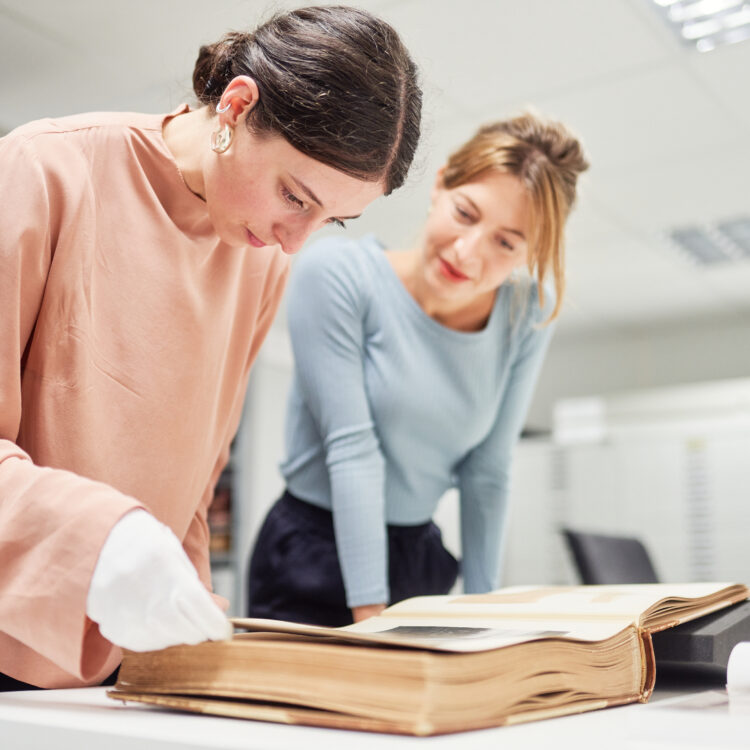Interview mit Marianne Kirschfink
Interview with Marianne Kirschfink
On 12 February 2020, Manuela Fellner-Feldhaus from the Krupp Historical Archive spoke to Marianne Kirschfink about her memories of the Brazilian national football team’s visit to the Ruhr region, which she captured in this photo album. Marianne Kirschfink was manager of the Touring Hotel, which belonged to Krupp and was leased by Imhoff. Here, you can read an excerpt from the interview:
Fellner-Feldhaus: Briefly tell us the story behind the photo album.
Kirschfink: The Brazilian players were the reigning world champions. And as such, they were received here in Essen as if the Emperor of China had arrived. It was crazy. A tall fence was built around the entire Touring Hotel. The Essen police were particularly careful and even took over our telephone switchboard. After all, the attack at the 1972 Olympic Games made everyone quite wary.
Fellner-Feldhaus: Why were the football players in Essen in the first place and why did they stay at the Touring Hotel?
Kirschfink: The team played, among other places, in Gelsenkirchen and wanted a hotel where they could be by themselves and be protected.
Fellner-Feldhaus: When you think of the visit, what does spontaneously come to mind?
Kirschfink: On the one hand, the eating habits: The football players only ate steaks, fruit and vegetables. I drove to the supermarket every morning with the chef de cuisine to buy fruit and vegetables. On the other hand, the great chaos that reigned here on location: So many people stood in front of the fence and wanted to get autographs. Yes, that was something special for Essen: to experience the reigning world champions this up close. The players were very approachable, and all stood at the fence and did shake people’s hands.
Fellner-Feldhaus: What was your experience of the players?
Kirschfink: The players had to train every day. When they had a day off, we all sat together in the TV room and watched “Mainzelmännchen” cartoons. One evening, even Pelé and Mr Havelange, who was president of the world football association at the time, showed up. The two of them joined us and we all had a great time! Then there was also the time the team spent three days in Hanover, where they played. Nevertheless, they chose to continue so stay at our hotel. Each of them had brought me a present from Hanover: Books and vinyl records. “Marianna, we’ve brought something back for you,” they said.
Fellner-Feldhaus: Thank you very much for the interview.










































